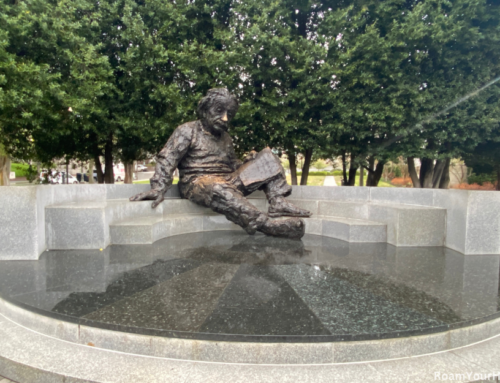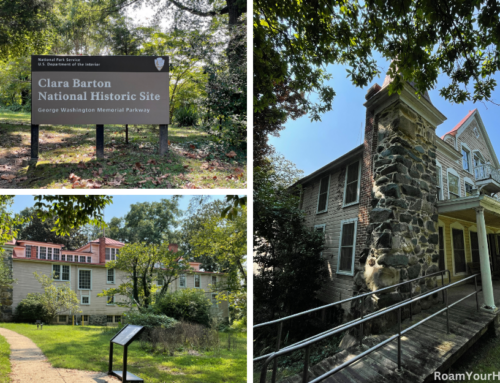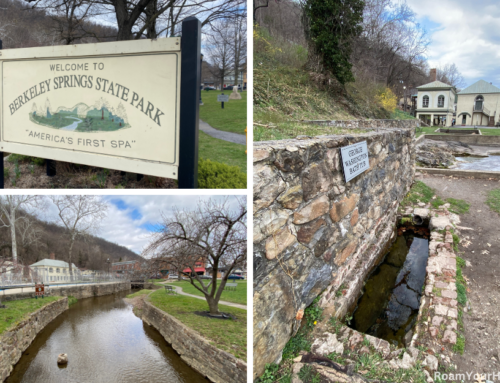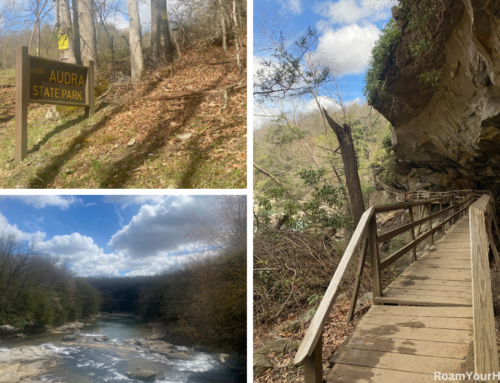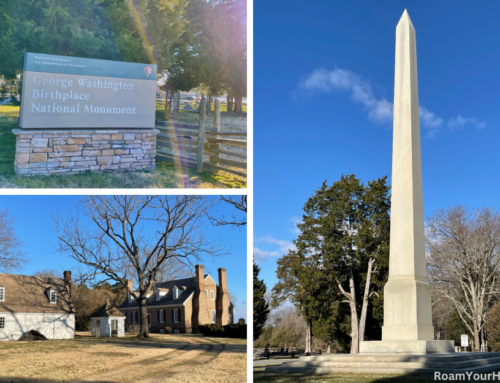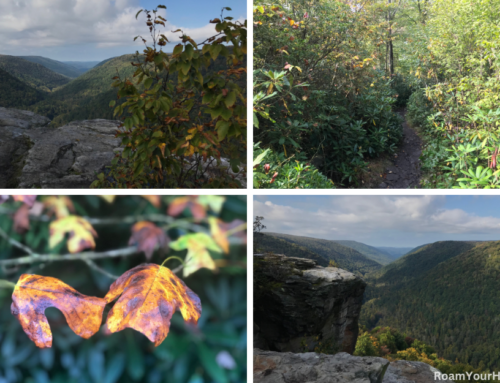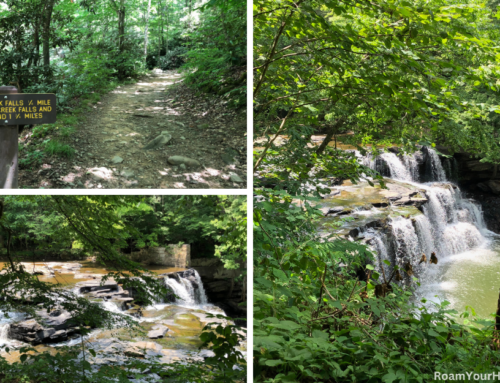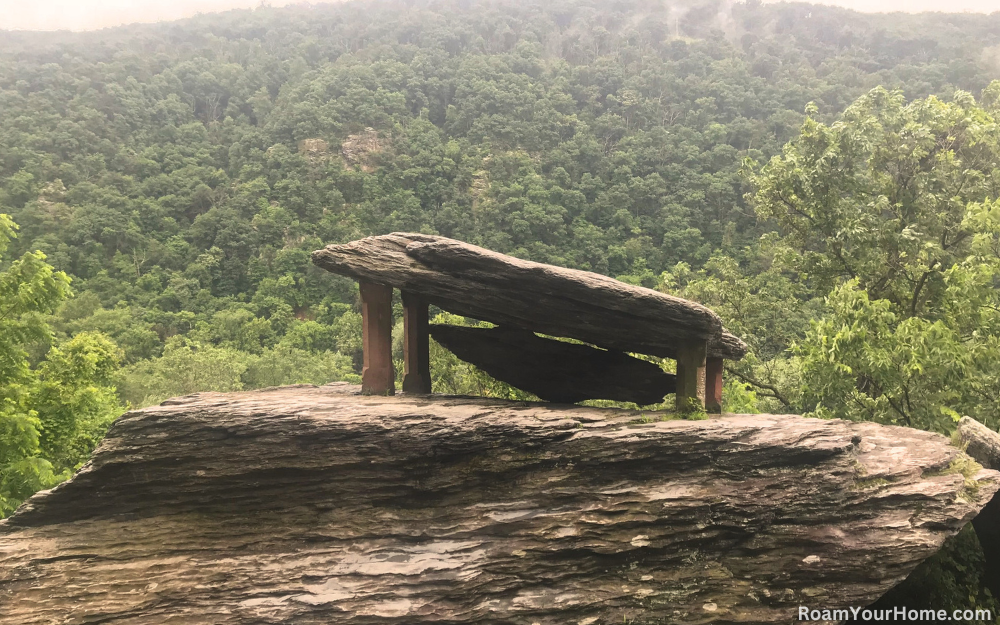
Visit Jefferson Rock at Harpers Ferry National Historical Park
Jefferson Rock is located in Harpers Ferry National Historical Park in wild and wonderful West Virginia. The park is a special place whose history is as long and storied as our nation’s.
There is an incredible amount to see in the park. You can tour Civil War Battlefields, learn about Lewis and Clark and John Brown, bike along the Chesapeake and Ohio Canal, or follow the white blazes while hiking along the Appalachian Trail.
Jefferson’s Rock is a short hike along the Appalachian Trail in Harpers Ferry. The rock was a popular spot with visitors long before the AT was even considered. Jefferson Rock offers absolutely stunning views of the mountains, the confluence of the Potomac and Shenandoah rivers, and the water gap.
How to get to Jefferson Rock
You can reach Jefferson Rock from the lower town by heading to the stone steps between the African American History Museum and the Civil War Museum on High Street. Keep climbing the steps. Along the way, you will pass St Peter’s Catholic Church and the ruins of St. John Episcopal Church. Soon, you will see the same view that inspired our nation’s third president to write: “This scene is worth a voyage across the Atlantic.”
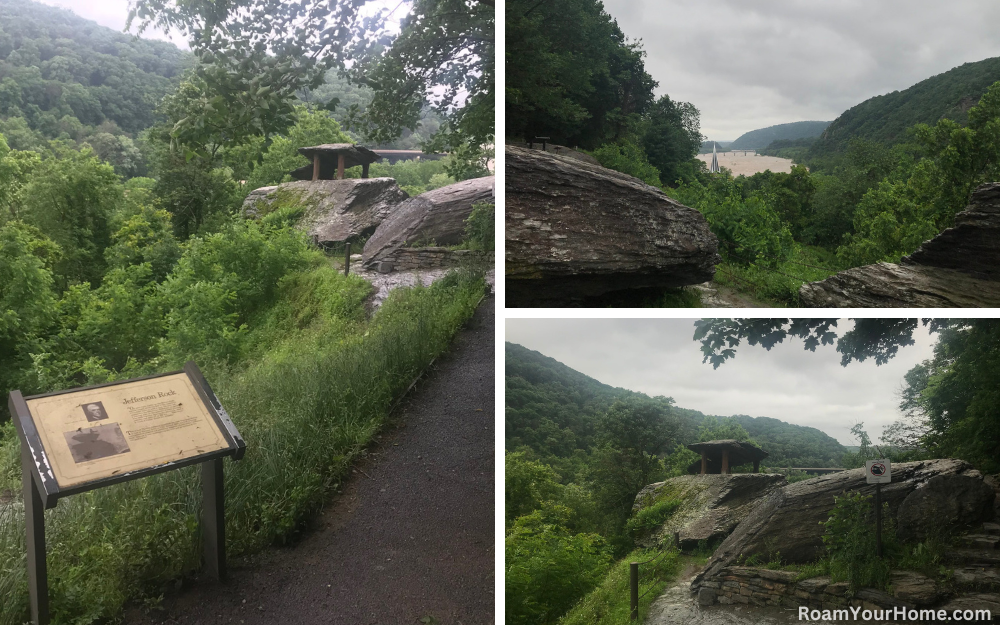
Thomas Jefferson stood at the rock on October 25, 1783. The following is his passionate and eloquent description of the visit.
“The passage of the Patowmac through the Blue Ridge is perhaps one of the most stupendous scenes in Nature. You stand on a very high point of land. On your right comes up the Shenandoah, having ranged along the foot of the mountain a hundred miles to seek a vent. On your left approaches the Patowmac in quest of a passage also. In the moment of their junction they rush together against the mountain, rend it asunder and pass off to the sea. The first glance of this scene hurries our senses into the opinion that this earth has been created in time, that the mountains were formed first, that the rivers began to flow afterwards, that in this place particularly they have been so dammed up by the Blue Ridge of mountains as to have formed an ocean which filled the whole valley; that, continuing to rise, they have at last broken over at this spot and have torn the mountain down from its summit to its base. The piles of rock on each hand, but particularly on the Shenandoah, the evident marks of their disruptions and avulsions from their beds by the most powerful agents in nature, corroborate the impression.
But the distant finishing which nature has given the picture is of a very different character. It is a true contrast to the former. It is as placid and delightful as that is wild and tremendous. For the mountains being cloven asunder, she presents to your eye, through the cleft, a small catch of smooth blue horizon, at an infinite distance in that plain country, inviting you, as it were, from the riot and tumult roaring around to pass through the breach and participate in the calm below. Here the eye ultimately composes itself; and that way, too, the road happens actually to lead. You cross the Patowmac above the junction, pass along its side through the base of the mountain for three miles, the terrible precipice hanging in fragments over you, and within about 20 miles reach Frederictown and the fine country around that. This scene is worth a voyage across the Atlantic.”
Jefferson Rock originally rested on a natural stone foundation, which would become very unstable over time. By 1860 the rock was propped and stabilized by four stone pillars.
Thousands of people make the historical trek along the AT to see Jefferson’s Rock. We hope you do too, but remember the rock is still unstable, and you cannot stand or climb on it.


